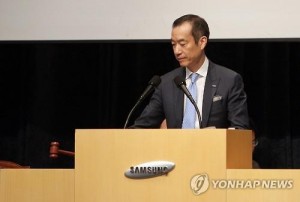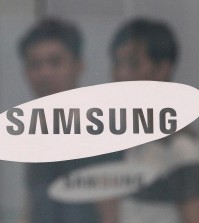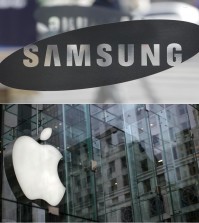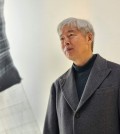- California Assembly OKs highest minimum wage in nation
- S. Korea unveils first graphic cigarette warnings
- US joins with South Korea, Japan in bid to deter North Korea
- LPGA golfer Chun In-gee finally back in action
- S. Korea won’t be top seed in final World Cup qualification round
- US men’s soccer misses 2nd straight Olympics
- US back on track in qualifying with 4-0 win over Guatemala
- High-intensity workout injuries spawn cottage industry
- CDC expands range of Zika mosquitoes into parts of Northeast
- Who knew? ‘The Walking Dead’ is helping families connect
Merger approval boon for Samsung owner family, but challenges still ahead

Choi Chi-hun, a co-head of Samsung C&T Corp. raps the gavel to announce the start of its shareholder meeting in Seoul on July 17, 2015. The construction arm of Samsung Group, and sister firm Cheil Industries Inc. won approval from shareholders for a merger plan, a step deemed vital for a power transfer at South Korea’s top conglomerate. (Photo courtesy of Samsung C&T)
SEOUL, July 17 (Yonhap) — Shareholders’ outright approval of a proposed merger of two key Samsung units gives momentum to the leadership transfer at Samsung Group, South Korea’s top conglomerate, market watchers said Friday.
But potential legal disputes over its “fair” process may continue to dog the group and its pledges to heed shareholders’ voices could come under scrutiny, they said.
Earlier in the day, shareholders of Samsung C&T Corp. and Cheil Industries Inc. okayed the high-profile 8.9 trillion won (US$7.75 billion) merger at their respective shareholder meetings.
While the approval was considered a done-deal for Cheil Industries, the de facto holding firm of Samsung Group, it had been a nail-biting matter for Samsung C&T, the construction arm. The merger faced an uphill battle from U.S. hedge fund Elliott Associates, which opposed the takeover, calling it a low-ball deal.
Their dispute drew huge publicity in South Korea as it involved the country’s powerful corporate empire, run by the Lee family, whose influence had never seemed to have been challenged until now, was pitted by “an attack from foreign money.”
The activist hedge fund, the third-largest shareholder in Samsung C&T, sought to block the merger bid through court injunctions and new proposals to the builder to change its dividend policy. Such attempts were all unsuccessful.
Market watchers said the support from local institutions that hold a substantial stake in Samsung C&T helped bring about the outcome Samsung wanted.
Many of them presumably opted to vote in support after the National Pension Service (NPS), which holds a swing vote with its 11.21 percent stake, apparently decided to side with Samsung.
The all-out efforts by the two Samsung units have borne fruit too, they said. In the run-up to the crucial vote, Samsung C&T mobilized thousands of its employees to visit individual shareholders in person to ask for support and ran an ad campaign in major newspapers to woo shareholders.
Late last month, Cheil Industries pledged to raise the dividend payout ratio to 30 percent by 2020 from 21 percent in 2014 if the merger is approved.
Following the ad blitz, Samsung C&T received about 5,500 calls from minority shareholders who delegated their voting rights to the builder.
“The patriotism marketing has paid off, and local media lent hands (to the move in) some way or another,” said Jeong Sun-seop, the head of Chaebul.com, a local researcher that mainly tracks family-owned conglomerates, known here as chaebol.
The merger approval is a boon for Lee Jay-yong, the 47-year-old heir apparent of the group, who needs to cement his control over the group with 67 affiliates including crown jewel Samsung Electronics Co.
When the merger is complete, Jay-yong will become the largest shareholder with a 16.54 percent stake in the new Samsung C&T, which already controls Samsung Electronics with an existing 4.1 percent. Jay-yong currently owns a mere 0.6 percent in the tech giant.
“It gives what Jay-yong needs the most and that is the Samsung Electronics stake (large) enough to wield control over. The controlling stake in Samsung C&T hikes to 40.2 percent with his family and other affiliates included, which makes his power over the group all the more solid,” said Kim Jang-won, an analyst at IBK Securities Co.
Samsung has taken a slew of measures to revamp its business portfolio over the past year by regrouping affiliates through takeovers and asset sales. The merger is the latest of its kind deemed part of Jay-yong’s power succession from his father Lee Kun-hee, the group’s tycoon who has been hospitalized since a heart attack in May last year.
The merger, when completed by Sept. 1 as planned, will help Samsung streamline its complex cross-ownership structure with Samsung C&T standing at the top of the hierarchy as the de facto holding firm. It already controls Samsung Life Insurance Co. — another key unit with the majority stake owned by the Lee family — which in turn is a major shareholder in Samsung Electronics.
“The approval on the merger means more than two-thirds of the shareholders agreed with it, and it is as good as having earned legitimacy for it,” said Baek Kwang-je, an analyst at Kyobo Securities Co.
In that respect, Kyobo Securities projected that the new entity would see its share price surge up to 33 percent in the next three years.
Putting aside the bright side, however, market watchers pointed out that Samsung will have to grapple with constant intervention from foreign shareholders over the course of the restructuring.
The process of the generational power shift at Samsung, whose units are publicly traded, is still opaque as opposed to the conglomerate’s influence, they noted. Also, not to mention, some of them are not yet convinced about the future of Samsung in the post-restructuring era.
“We know that Elliott won’t back away that easily. It might try to block the merger again through fresh suits and stock purchase claims,” Jeong of Chaebul.com said.
One of the issues raised by Elliott against Samsung C&T was the merger ratio of 0.35 Cheil Industries for 1 Samsung C&T share. The local court here ruled it as a fair calculation as the figure was based on share prices in accordance with law.
But this drew controversy as Elliott and other global investment advisory firms argued otherwise, claiming that it should have been adjusted higher for Samsung C&T shareholders citing their own evaluations.
Analysts said even though the terms of the merger are legally flawless, a global company like Samsung, the world’s top smartphone and memory chip maker, should opt to make efforts to restructure in a way that would be more convincing to foreign as well as minority stakeholders.
Jeong called on Samsung to take a more active approach so that it can dispel shareholders’ doubts over the group’s future after the leadership change.
“Samsung is the most influential group in the country. It should take action and show the public that its call to boost shareholder value, as Cheil Industries promised, won’t just end up as rhetoric,” he said.
Kim Sang-jo, an economics professor at Hansung University, said Samsung could be facing a long way ahead as its next steps toward the power transfer may need to go through the same row as it has experienced with Elliott.
“Such events (for power succession), will require more transparency and market fairness. This merger may only be the beginning for Samsung, not the end,” he said.
















Pingback: Boon Yong Lee Contractor | job list general contractor info
Pingback: Boon Yong Lee Contractor | quotes - tile contractor jobs
Pingback: Boon Yong Lee Contractor | Approved Contractors
Pingback: Boon Yong Lee Contractor | Contractor - Request a quote
Pingback: Boon Yong Lee Contractor | Builders R Us
Pingback: Boon Yong Lee Contractor | reviews - fresh contractors reviews
Pingback: Boon Yong Lee Contractor | quote - general contractors
Pingback: Boon Yong Lee Contractor | outdoors - paving contractors
Pingback: Boon Yong Lee Contractor | contractors - garden remodeling contractors